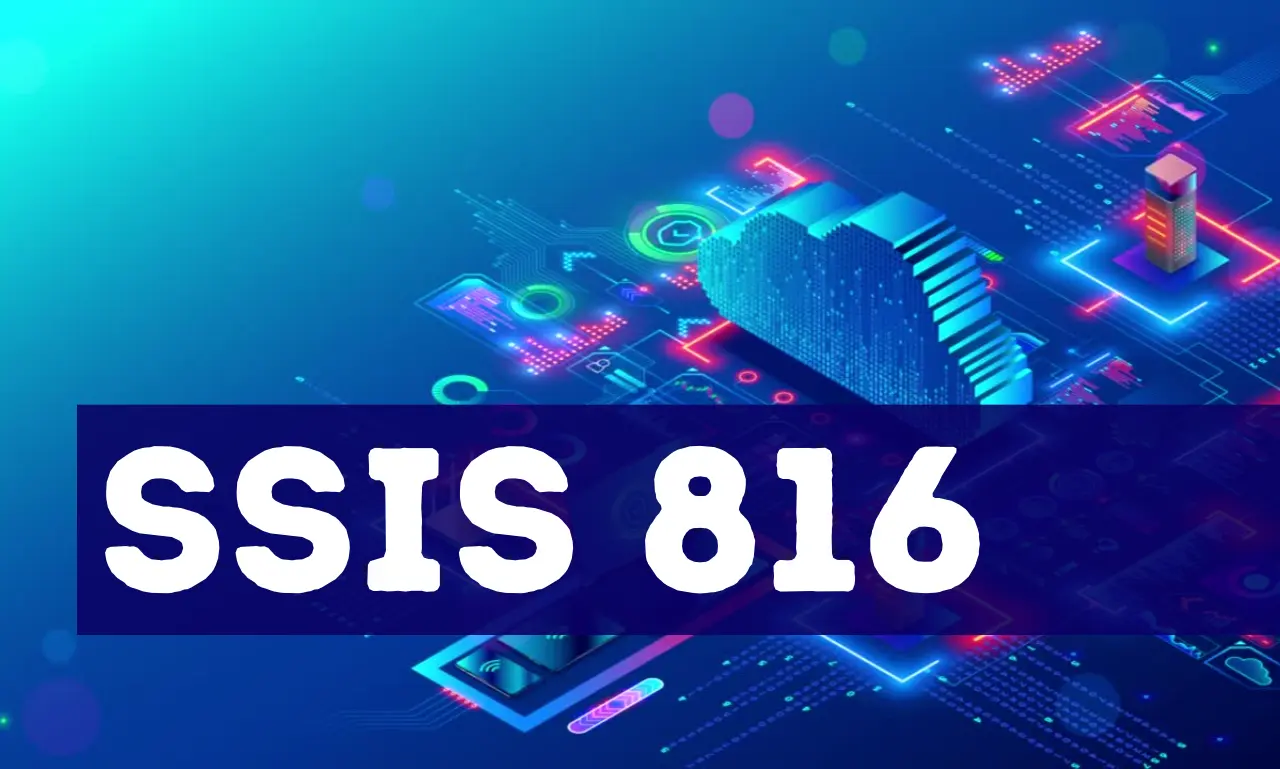In today’s data-driven world, efficient management and integration of data are crucial for businesses to stay competitive. SQL Server Integration Services (SSIS) has long been a go-to solution for organizations seeking robust data integration capabilities. With the release of SSIS 816, Microsoft has taken data integration to the next level, offering enhanced performance and a host of new features.
Understanding the Importance of SSIS

SSIS 816 plays a pivotal role in enabling organizations to extract, transform, and load (ETL) data from various sources into a centralized location such as a data warehouse. By facilitating seamless data movement and transformation, SSIS streamlines business processes and enables informed decision-making based on accurate, timely data.
Features and Benefits of SSIS 816
Improved Performance
SSIS 816 boasts significant performance enhancements, allowing for faster data processing and reduced latency. Whether handling large volumes of data or executing complex transformations, users can expect smoother, more efficient operations.
Enhanced Data Integration Capabilities
With SSIS 816, users gain access to a wide range of connectors and tools for integrating data from diverse sources, including databases, cloud platforms, and file systems. This expanded connectivity simplifies the integration process and enables seamless data flow across the entire organization.
Advanced Security Measures
Security is a top priority in today’s data landscape, and SSIS 816 includes robust security features to safeguard sensitive information. From encryption and access controls to audit trails and compliance measures, SSIS ensures that data remains protected throughout the integration process.
How SSIS 816 Differs from Previous Versions
SSIS 816 builds upon the foundation laid by its predecessors, introducing several key enhancements and improvements. From performance optimizations to new features such as enhanced error handling and support for real-time data integration, SSIS 816 offers a more versatile and scalable solution for modern data integration needs.
Use Cases and Applications of SSIS 816

SSIS 816 finds application across a wide range of industries and use cases, including:
- Business Intelligence: Leveraging SSIS 816’s data integration capabilities to support business intelligence initiatives, including reporting, analytics, and data visualization.
- Data Warehousing: Building and maintaining data warehouses to centralize and analyze large volumes of structured and unstructured data.
- Data Migration: Seamlessly migrating data from legacy systems to modern platforms, ensuring data consistency and integrity throughout the process.
- ETL Automation: Automating the extraction, transformation, and loading of data to streamline business processes and improve operational efficiency.
Step-by-Step Guide to Implementing SSIS 816
Installation Process
To get started with SSIS 816, follow these simple steps:
- Download the latest version of SQL Server Integration Services from the official Microsoft website.
- Run the setup wizard and follow the on-screen instructions to install SSIS 816 on your system.
- Once installed, launch SQL Server Management Studio (SSMS) and connect to the Integration Services instance.
Configuration and Setup
After installing SSIS 816, configure the necessary settings and connections:
- Configure connection managers to connect to your data sources and destinations.
- Set up project parameters and variables to customize the behavior of your SSIS packages.
- Define package configurations to dynamically adjust package settings based on environmental variables.
Creating Data Integration Packages
With SSIS 816, creating data integration packages is straightforward:
- Launch SQL Server Data Tools (SSDT) and create a new Integration Services project.
- Design your data flow by adding data sources, transformations, and destinations to the package control flow.
- Configure properties and mappings for each component to define how data is transformed and loaded.
Best Practices for Utilizing SSIS 816 Effectively
To maximize the benefits of SSIS 816, consider the following best practices:
- Optimize Performance: Tune SSIS packages for optimal performance by optimizing data flows, utilizing parallelism, and minimizing resource contention.
- Implement Error Handling: Implement robust error handling mechanisms to gracefully handle exceptions and ensure data integrity.
- Monitor and Logging: Monitor package execution and log events to track performance metrics, identify bottlenecks, and troubleshoot issues effectively.
Troubleshooting Common Issues with SSIS 816

While SSIS 816 offers powerful data integration capabilities, users may encounter occasional challenges:
- Performance Bottlenecks: Identify and address performance bottlenecks by analyzing package execution statistics and optimizing resource usage.
- Data Quality Issues: Address data quality issues by implementing data validation checks and cleansing transformations within SSIS packages.
- Connectivity Problems: Troubleshoot connectivity problems by verifying network settings, firewall configurations, and authentication credentials.
Future Trends and Developments in SSIS Technology
Looking ahead, the future of SSIS technology holds exciting possibilities:
- Cloud Integration: With the rise of cloud computing, SSIS is expected to evolve to better support hybrid and multi-cloud data integration scenarios.
- AI and Machine Learning: Integration of AI and machine learning capabilities into SSIS could enable advanced data processing and predictive analytics.
- Containerization: Adoption of containerization technologies such as Docker and Kubernetes may streamline deployment and management of SSIS packages in diverse environments.
Conclusion
SSIS 816 represents a significant leap forward in data integration technology, offering enhanced performance, versatility, and security. By leveraging SSIS 816, organizations can streamline their data integration processes, gain valuable insights, and stay ahead in today’s competitive business landscape.
FAQs (Frequently Asked Questions)
- What is SSIS 816? SSIS 816 is the latest version of SQL Server Integration Services, a powerful data integration tool developed by Microsoft.
- What are the key features of SSIS 816? Key features of SSIS 816 include improved performance, enhanced data integration capabilities, and advanced security measures.
- How does SSIS 816 differ from previous versions? SSIS 816 introduces several enhancements and new features, including performance optimizations and support for real-time data integration.
-
What are some common use cases for SSIS 816? Common use cases for SSIS 816 include business intelligence, data warehousing, data migration, and ETL automation.



